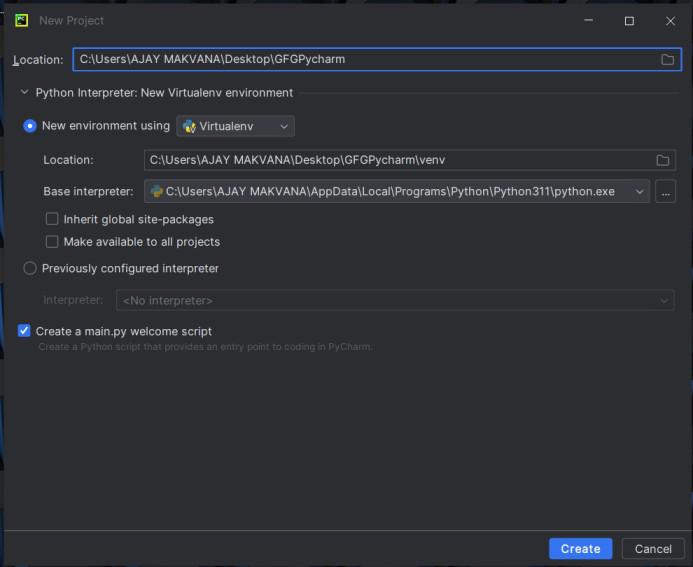What is PyCharm? Features, Advantages & Disadvantages
Last Updated :
12 Mar, 2024
PyCharm stands out as a widely used integrated development environment (IDE) tailored for Python programming. Crafted by JetBrains, it encompasses a diverse array of capabilities that enhance the efficiency and enjoyment of Python development. In this piece, we will delve into an exploration of PyCharm, elucidating its nature, highlighting its pivotal attributes, enumerating its merits, and acknowledging its drawbacks.
What is PyCharm?
PyCharm is a sturdy and characteristic-packed IDE that many Python builders swear with the aid of, it is not without its negative aspects. These limitations consist of useful resource consumption, a getting-to-know curve, price for the Professional Edition, slower startup instances, and constrained language support. It’s critical for builders to not forget their precise desires and options while selecting an IDE, as the “best” IDE can vary depending on the context and individual requirements.
PyCharm Features
- Intelligent Code Completion: PyCharm offers intelligent code completion that suggests code snippets, variable names, and function names as you type, saving you time and reducing errors.
- Integrated Debugger: The integrated debugger allows you to set breakpoints, inspect variables, and step through your code to identify and fix issues.
- Powerful Refactoring: You can easily refactor your code with PyCharm, making it cleaner and more maintainable. It can help you rename variables, extract methods, and more.
- Version Control Integration: PyCharm seamlessly integrates with version control systems like Git, making it easy to track changes and collaborate with others on your projects.
- Code Analysis: PyCharm includes code analysis tools that can detect code smells and suggest improvements to your code, helping you write cleaner and more efficient Python programs.
Which framework is used in PyCharm?
PyCharm is versatile and supports various Python frameworks, some of which include:
Create & Run Your First Python Program in PyCharm
Let’s illustrate how to create a simple Python program using PyCharm:
Step 1: Installation and Project Setup
Install PyCharm on your computer and choose the edition that suits your needs. you can download pycharm from here. After Installation when first time you open pycharm you will see this screen, in this screen there is some options such as create new project, open already exist projects, or get project from version control system such as GitHub.

By click on new Python project within PyCharm we can able to make new Python project and in next screen it ask about the some basic details like project repository location.

So after this we get one main.py file we will write our first Python code in that main.py file
Step 2: In the code editor, write a basic Python program that calculates the sum of numbers from 1 to 10:

Now click on the run icon on top right side of the PyCharm editor to run our code
Output

You will see that pycharm has shown output of our code in below part of the editor screen.
Advantages of PyCharm
- Productivity Boost: PyCharm’s intelligent features and powerful tools significantly increase your coding productivity, allowing you to write better code in less time.
- Robust Ecosystem: It has a vast ecosystem of plugins and extensions that can be customized to suit your specific needs and preferences.
- Community Support: PyCharm has a large and active community, which means you can find plenty of tutorials, documentation, and support online.
- Great Documentation and Community: JetBrains, the company behind PyCharm, provides extensive documentation and resources
- Cross-Platform: PyCharm is available for Windows, macOS, and Linux, ensuring that you can use the same IDE across different operating systems without significant differences in functionality.
Disadvantages of PyCharm
- Resource Intensive: PyCharm can be resource-intensive, especially the Professional edition, which may not run smoothly on older or less powerful computers.
- Learning Curve: For beginners, PyCharm’s extensive features can be overwhelming, and it may take some time to learn and master all its capabilities.
- Language-Specific: While PyCharm excels at Python development, it may not be the best choice for multi-language development projects or when working with languages other than Python.
- Large Disk Space Usage: PyCharm consumes a significant amount of disk space, especially when considering the IDE itself, virtual environments, and project files.
Share your thoughts in the comments
Please Login to comment...